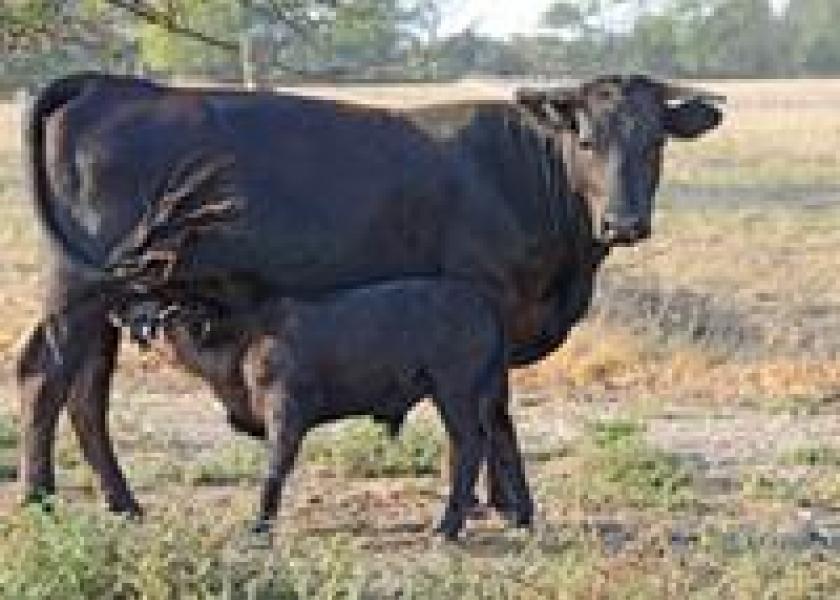Are Your Cows Ready for Breeding Season?

When Travis Van Anne purchased a set of bred cows from Oklahoma in the fall of 2011, he did not expect any type of health wreck. The cows were quality cows with sound genetics and they looked good on paper and in person. However, he had not anticipated what would follow.
The cows were placed on irrigated pastures in Nebraska and calved in January. Once weaned, the calves were placed in the feedyard where many of the calves died and those that survived had reduced rates of gain. The following breeding season the pregnancy rate on those cows was only 85%.
Van Anne attributes the culmination of problems to drought. The cows were purchased following a hot, dry summer where the cows had limited quality feed and reduced water quality. Van Anne, a Nebraska based senior professional services veterinarian with Boehringer Ingelheim, understands that nutrition and cow health during that first trimester is critical to the calf’s health and future rebreeding.
Missouri veterinarian Dan Goehl agrees and says that we will probably see more issues as we realize the lasting effects of fetal programing during that first trimester, and how drought impacts cattle performance.
"Probably the bigger issue of the drought will be the effect on the calves that are being born," Goehl says. "We are realizing more and more the lasting effects of fetal programming on health. I think we will see some of these effects at calving, at weaning and maybe further down the road."
In North Dakota, reproductive failures of 20% to 30% were reported last fall in some herds. Extension service personnel in that state attribute part of it to increase incidences of reproductive diseases like Leptospirosis.
This year a disease might have concentrated near moist climate conditions, such as limited water sources of ponds and reservoirs that were drying up and stagnant.
"The other unknown indirectly related to the drought is the high number of cows that contracted Epizootic hemorrhagic disease (EHD) and Bluetongue," Goehl adds. "We know Bluetongue can cause cows that are exposed during certain periods of gestation to have birth defects, lose pregnancy, etc. A natural conclusion would be that EHD will cause similar issues. Our percent of cows that were confirmed bred and are now open is also running above normal."
Modify the game plan. "Drought will have some lingering effects, and at this point it is probably too late going into spring breeding to forage test to be sure of the plane of nutrition," Goehl says. "However, it is important to be sure the cows are not being shorted as they try to nurse a calf and breed back.
"Our forage through the winter may be very different than what we normally would have produced. Also, pastures that were severely stressed will take some time to bounce back even with adequate moisture this spring," he says.
While you may not be able to rely on pastures for adequate nutrition, you need to continue to supply adequate energy and protein to the herd, says Dan Larson, nutritionist with Great Plains Consulting Services. (Read more details on nutrition to improve breeding rates on page 10.) In addition, consider the impact a lack of minerals, vitamins and ionophores may
have on reproduction, and boost immunity with well-timed vaccinations.
Maximize a mineral program. Minerals are essential to reproductive performance, even though you might be tempted to cut this cost during drought. However, both micro and macromineral requirements must be met for rebreeding and to achieve high first service conception rates, especially during drought, Larson says.
"The strategic, targeted use of chelated trace minerals in cowherds is gaining popularity. Zinc, copper, and manganese are the trace minerals most likely to benefit cowherd reproduction if supplied in the chelated form," he says.
"Chelated trace minerals can help cows make a quicker return to ovarian activity after calving, improve AI conception rates and improve overall pregnancy rates," Larson says. "Our own experience with well-managed herds indicates it is possible to move 20% more cows to calving in the fi rst cycle."
The most critical period for making these changes to a mineral program is 60 days prior to the breeding season, and ideally extending to the middle of it. Vitamins for good health. Vitamin A tends to be limited during the fall and winter and during drought. Vitamin A is necessary for the maintenance of epithelial tissue, such as skin, and the lining of respiratory, digestive and reproductive tracts.
"Vitamin A is cheap to add to a ration and boosts epithelial health," Van Anne says. "Or you can give as an injection." If you do purchase vitamin A supplement, it doesn’t have a long shelf life, so need to purchase as close to the mill date as possible.
Don’t skip cowherd vaccinations. While drought is an uncontrollable environmental event, don’t throw in the towel and do away with your normal herd health program. If anything, health programs are more critical during drought when an animal’s immune system is stressed.
Work with your veterinarian to create a customized herd health program for your area. There are a few standard vaccines that should be included to prevent problems with reproductive diseases in your herd 30 to 40 days prior to bull turnout or breeding (follow label directions for dosage and timing). At a minimum, vaccinate cows annually with:
¦ Five-way viral vaccine (IBR, BVD, PI-3, BRSV)
¦ Five-way leptospirosis vaccine
¦ Vibriosis vaccine
¦ Vaccinate replacement heifers for Bang’s between 4 and 12 months of age.
The impact of drought on cowherds will continue even after moisture returns. So remain diligent with nutrition and animal health protocols.
BONUS CONTENT:







